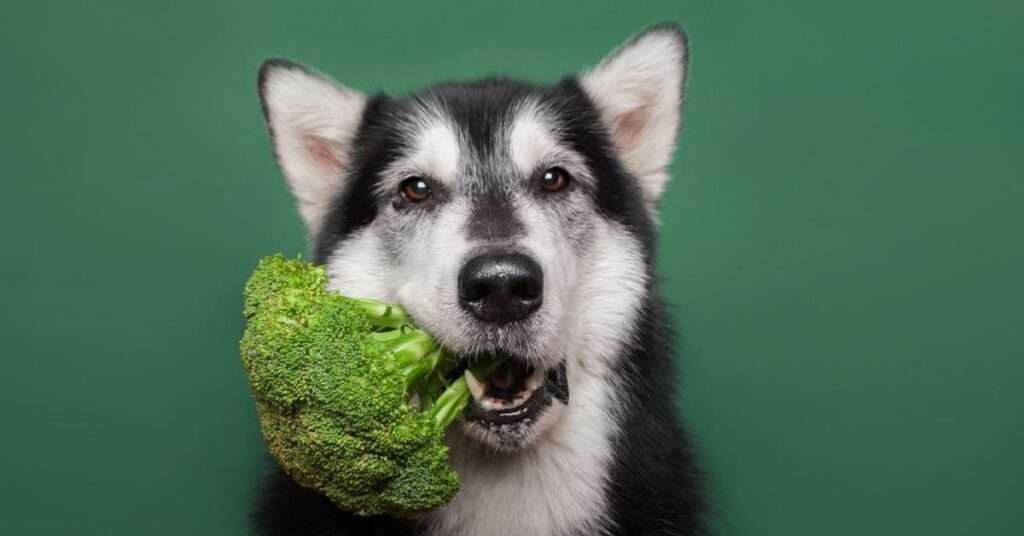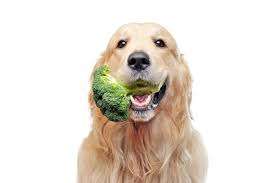Pet owners often find themselves wondering which human foods are safe for their dogs to eat. Certain fruits and vegetables offer health benefits, but some can actually be harmful. Broccoli, a nutrient-rich cruciferous vegetable, is popular among humans for its health benefits.
The main question is whether broccoli is safe for dogs to consume.
Learn more about: Cat toys
The simple answer is yes, dogs can enjoy broccoli as long as it’s given in moderation. However, there are important considerations to keep in mind, just like with other human foods. This article covers the nutritional benefits, possible risks, serving tips, and answers to commonly asked questions about feeding broccoli to dogs.

Is Broccoli Safe for Dogs?
Yes, dogs can usually eat broccoli safely, whether it’s served raw or cooked. It is non-toxic and provides several beneficial nutrients that support their overall health. However, it should be given in moderation and served plain, without oils, butter, garlic, onions, or heavy seasonings.
Veterinarians often suggest that broccoli and other vegetables should be a small part of a dog’s diet. As dogs are primarily meat-eaters, most of their dietary needs should come from high-quality dog food that provides protein, fats, vitamins, and minerals.
Nutritional Benefits of Broccoli for Dogs
Broccoli is a nutrient-packed vegetable that can add value to a dog’s diet.
Some of its key benefits include:
Rich in Vitamins
- Vitamin C plays a role in boosting the immune system, especially in senior dogs.
- Vitamin K contributes to maintaining strong bones and proper blood clotting.
- Vitamin A helps maintain good vision, promotes healthy skin, and strengthens the immune system.
High in Fiber
Broccoli contains dietary fiber, which helps with digestion, encourages regular bowel movements, and can help overweight dogs feel full after meals.
Packed with Antioxidants
The antioxidants found in broccoli help combat free radicals, which can reduce inflammation and lower the risk of chronic diseases in dogs.
Low-Calorie Snack
Broccoli is naturally low in calories and fat, making it a great, guilt-free treat for dogs that need to manage their weight.
Mineral Support
It provides essential minerals like calcium, magnesium, potassium, and phosphorus, which contribute to strong bones, nerve function, and overall vitality.
Potential Risks of Feeding Dogs Broccoli
Although broccoli is safe, pet owners should be aware of some possible risks:
Isothiocyanates
Broccoli contains natural compounds called isothiocyanates. In small doses, these are harmless, but in larger amounts, they may cause stomach irritation, leading to gas, diarrhea, or stomach upset.
Choking Hazard
The firm stalks of broccoli can pose a choking risk, especially for smaller dogs. Make sure to chop broccoli into small, manageable pieces before giving it to your dog.
Overfeeding Concerns
Eating too much broccoli can cause bloating, gas, or discomfort due to its high fiber content. Overall, broccoli should be offered sparingly and make up no more than 10% of a dog’s daily food intake.
How to Serve Broccoli to Dogs
Broccoli can be prepared in various ways, but it must always be served plain and without harmful additives.
Some safe ways to serve broccoli to dogs include:
Raw Broccoli
Raw broccoli provides a crunchy texture that may help clean a dog’s teeth. It should be cut into small, bite-sized florets. It is also recommended to introduce raw broccoli slowly, as it can be harder to digest.
Steamed or Boiled Broccoli
Steaming or boiling broccoli makes it softer, which helps dogs chew and digest it more easily. It retains most of its nutrients without adding extra calories. Do not overcook broccoli, as this can diminish its nutritional benefits.
Frozen Broccoli
Frozen broccoli can be a refreshing summer treat. Broccoli should be cut into small pieces to reduce the risk of choking.
⚠️ Remember to never add butter, cheese, salt, onions, garlic, or oils to broccoli when feeding it to dogs, as these can be harmful or even toxic.
How Much Broccoli Can Dogs Eat?
The safe amount of broccoli a dog can eat depends on their size and overall diet.
- Small dogs (under 20 lbs) – 1–2 small florets occasionally.
- Medium dogs (20–50 lbs) – A few small pieces, no more than 5% of their meal.
- Large dogs (50+ lbs) – A handful of florets, but still within the 10% rule.
Always observe your dog for any changes in digestion when introducing new foods.
Signs Your Dog Ate Too Much Broccoli
Eating too much broccoli may cause a dog to show the following symptoms:
- Gas and bloating
- Vomiting
- Diarrhea
- Abdominal discomfort
- Loss of appetite
If your dog shows serious symptoms, it’s important to consult a veterinarian.
Broccoli vs. Other Vegetables for Dogs
Broccoli is not the only vegetable that dogs can safely eat. Here is how it compares to other dog-friendly options:
- Carrots: Rich in beta-carotene, good for eye health and chewing.
- Green beans: Low in calories and high in fiber, making them a hydrating treat.
- Cucumbers: Refreshing and low in calories, great for hydration.
- Zucchini: Gentle on digestion and packed with vitamins.
- Lettuce: Hydrating, but less nutrient-dense than broccoli.
On the other hand, some vegetables like onions, garlic, leeks, and mushrooms should be avoided, as they can be toxic to dogs.
Can Puppies Eat Broccoli?
Puppies can have broccoli, but it should be offered in very small portions. Because their digestive systems are more sensitive, it’s best to introduce broccoli gradually. Puppies should mostly eat a high-quality puppy food that supports their growth, with vegetables given sparingly.
Creative Ways to Give Dogs Broccoli
To make broccoli more appealing, pet owners can try the following:
- Mixing with kibble: Chop steamed broccoli and mix it with dog food.
- Blending into purees: Combine broccoli with dog-safe vegetables like carrots to create a healthy topper.
- Using as training treats: Offer small, raw or cooked florets as a low-calorie alternative to high-calorie treats.
Frequently Asked Questions (FAQs)
Broccoli is safe for dogs to eat, but it should not be a daily food. It is better treated as an occasional snack rather than a main part of their diet.
Yes, dogs can eat broccoli stems, but they should be cut into very small pieces. The stems are tough and fibrous, which can make them hard to chew and may pose a choking hazard.
Yes, broccoli leaves are safe for dogs and contain valuable nutrients. However, they should be given in moderation, just like the rest of the broccoli.
Dogs should never consume onions, garlic, leeks, or chives, as these are poisonous to them. Mushrooms and avocados should also be avoided due to their potential toxicity.
No, dogs should not eat broccoli that has been cooked with butter, cream, cheese, or other seasonings. These additions can be harmful to dogs.
Yes, broccoli can be a beneficial snack for overweight dogs. It is low in calories and high in fiber, making it a good choice for dogs on a weight management plan.
Raw, crunchy broccoli may help remove some plaque from a dog’s teeth, which could reduce mild bad breath. However, if the bad breath persists, it may be a sign of a more serious dental issue, and a visit to the veterinarian is needed.
Conclusion
So, can dogs eat broccoli? Yes, but only when given in the right way. Broccoli offers vitamins, fiber, and antioxidants that can contribute to a dog’s overall health. It is also a low-calorie alternative to many processed treats.
However, it is important to practice portion control. Giving too much broccoli can lead to stomach upset or other digestive problems. It should never be used as a substitute for a balanced and complete diet.
Pet owners who introduce broccoli gradually, serve it plain, and closely observe their dog’s reaction can feel confident that this vegetable can be a safe and nutritious addition to their pet’s meals.

